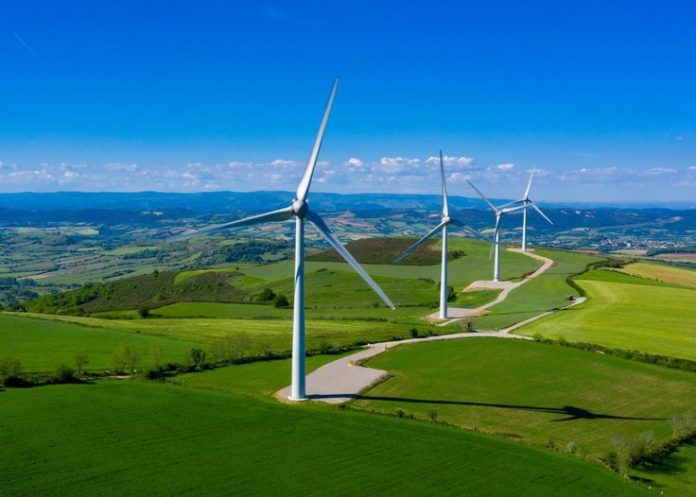The Greenhouse Gas (GHG) Protocol, the world’s most widely used framework for corporate emissions reporting, has released for consultation a draft update to its guidance on Scope 2 emissions, the category covering greenhouse gases from purchased electricity, steam, heat, and cooling. The proposed update, open for public input until December 19, seeks to refine how organizations account for the indirect emissions generated by the power they use. It aims to make reporting more consistent with how energy is actually produced, delivered, and consumed across increasingly complex and decentralized grids.
In Africa, where energy systems are rapidly evolving but still deeply carbon-intensive, the update arrives at a critical time. The continent’s demand for electricity is projected to more than double by 2040, driven by population growth and industrialization. Yet nearly half of that demand will still rely on fossil fuels, according to the International Energy Agency (IEA). That means the way emissions from purchased power are measured, reported, and verified will play a decisive role in how African governments, utilities, and businesses align their growth ambitions with climate targets.
The GHG Protocol, founded in 1997 by the World Resources Institute (WRI) and the World Business Council for Sustainable Development (WBCSD), underpins most of the world’s sustainability reporting frameworks, including the IFRS Foundation’s ISSB standards and Europe’s ESRS under the Corporate Sustainability Reporting Directive. In practical terms, almost every major sustainability disclosure; from carbon-intensive industries to financial institutions, references GHG Protocol methods. A change in its guidance, therefore, has global implications.
Scope 2 emissions represent a substantial share of an organization’s footprint. Globally, energy generation is responsible for roughly 40% of total greenhouse gas emissions, and about half of that energy is used by commercial and industrial sectors.
For African economies, the proportion is often higher. Manufacturing hubs like South Africa, Egypt, and Nigeria rely heavily on coal and gas for electricity generation, making indirect emissions from purchased power a significant part of corporate carbon inventories. The same applies to fast-growing service industries, from data centers in Kenya to mining operations in Zambia, where electricity consumption is directly tied to emissions intensity.
The proposed update introduces more rigorous rules around how companies report the emissions associated with their energy purchases. It places particular emphasis on the “market-based method,” where organizations claim reductions based on renewable energy contracts or certificates. Under the draft revisions, such claims must now meet stricter “Scope 2 Quality Criteria” to ensure that renewable energy purchases genuinely correspond to reductions in real-world emissions.
A notable feature of the proposal is the introduction of hourly matching and deliverability requirements. Instead of relying on annual averages, companies would need to show that the clean energy they procure matches the time and place of their actual electricity use. This shift aims to reduce double counting and align reported emissions with the physical realities of power grids. In essence, it challenges organizations to move beyond purchasing generic renewable energy certificates and toward sourcing power that can be verified in real time.
This level of precision could reshape corporate energy strategies. Most renewable energy agreements on the continent today are long-term Power Purchase Agreements (PPAs) based on annual output rather than hourly data. Transitioning to time-based accounting will require deeper coordination between regulators, utilities, and investors. But it could also strengthen transparency in emerging renewable energy markets such as Morocco, Kenya, and South Africa, countries that are pioneering wind and solar integration while trying to attract green investment through credible reporting systems.
The update also revisits the issue of consequential accounting, which estimates system-wide impacts from actions such as clean energy procurement or infrastructure investments. This approach looks beyond a company’s direct operations to assess how its choices affect emissions across the wider grid. For African economies where regional power pools are expanding, for instance, the Southern African Power Pool (SAPP) or the West African Power Pool (WAPP), this distinction between organizational and system-level effects could become increasingly relevant. It allows policymakers to better understand how corporate renewable energy commitments interact with national decarbonization plans.
Experts see the update as an opportunity to close long-standing gaps in data quality and comparability. Many African companies struggle with inconsistent or unavailable grid emission factors, which undermines the credibility of reported Scope 2 data. Countries like Ghana and Rwanda are now working to establish national emission factor databases, while Kenya’s Energy and Petroleum Regulatory Authority has begun publishing renewable energy capacity and generation statistics that could improve reporting accuracy.
As Alexander Bassen, Chair of the GHG Protocol’s Independent Standards Board, noted, “A decade after publishing the Scope 2 standard, an update is both timely and necessary.” The shift reflects the reality that electricity systems today are cleaner, more complex, and more interconnected than ever.
Read also: IUCN confirms extinction of Slender-billed Curlew, once common across North Africa
This update also reinforces the need for skills and infrastructure that can support transparent measurement. More companies are now seeking training on how to align GHG disclosures with both GRI and IFRS S2 requirements, particularly as investors demand consistent carbon data. The African Securities Exchanges Association (ASEA) has already begun referencing GHG Protocol standards in its guidance to listed companies, signaling a growing expectation for harmonized reporting.
The outcome of this consultation could determine how Africa’s private sector engages with the global energy transition. As the continent scales up renewables while expanding access to power, a credible and modernized accounting framework will be essential. Accurate Scope 2 reporting can help attract investment, inform national policies, and ensure that corporate claims of “clean energy use” hold up under scrutiny.
The GHG Protocol consultation runs until December 19, after which the feedback will shape the final version of the updated standard. For Africa, the message is clear: as the world redefines how electricity-related emissions are counted, the continent must ensure that its data, systems, and reporting capacity evolve in step. because credible information remains the foundation of sustainable growth.






